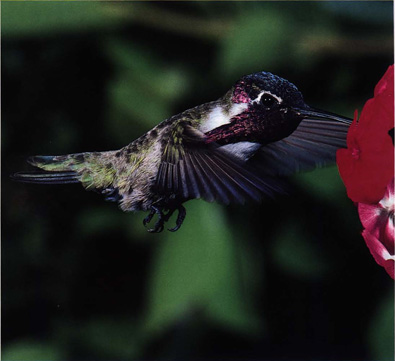
Cleaning Feeders
Successful feeding of hummingbirds requires a commitment to maintaining clean feeders with fresh solutions. Unlike bird seed, which, contained in shells, can last many weeks or longer if the birds don't eat it right away, hummingbird sugar solution is a liquid and is highly susceptible to mold, harmful bacteria, or fermentation. If you let this happen, you could be risking the health and possibly the lives of the hummingbirds that use your feeder. We can't emphasize enough how important it is to take feeder maintenance seriously.
Clean Feeders Every 2 to 3 Days
Wash feeders out in very hot water every 2 to 3 days. You may add some vinegar to the hot water to remove mold, or, for really tough cleaning jobs, use a tiny amount of Clorox, making sure to rinse the feeder out thoroughly when you are through. If necessary, scrub hard-to-reach spots with bottle brushes and pipe cleaners.
If the weather is particularly cool, it might be acceptable to wait slightly longer than 3 days to clean feeders. In hot weather (over 60 degrees F.), during which pathogens in the feeding solution can multiply rapidly, the feeders should be cleaned every 2 days. After you have cleaned feeders, refill them with fresh sugar solution.
When to Put Up Feeders
Most species of hummingbirds are migrant, only coming to North America in the warmer seasons. Feeders should be up in time for their arrival. The timing will vary depending on where you live. In the South arrival may be as early as January or February; in the North it may be as late as April or May. Check the range maps and migration information in the Quick Guides in each of the species descriptions to determine the timing in your area.

Five hummingbirds enjoying a feeder made by Opus.

A Costa's hummingbird, male, visiting a flower.
When to Take Down Feeders
One of the biggest misconceptions about hummingbirds held by the general public is the belief that if you do not take hummingbird feeders down at a certain time in the fall, you will prevent the hummingbirds from migrating. This is not true.
In many areas, hummingbirds begin migrating even when there are still flowers in bloom and insects available. In fact, males generally migrate several weeks ahead of females and immatures. Species that live in the same area often migrate at different times, regardless of the fact that food obviously remains for any birds that stay behind.
The birds more likely time their migrations according to changing day length or photoperiod. Thus, they are responding not to the availability of food but to an ancient innate urge that tells them when to go. Migrating hummingbirds may actually be helped by the feeders that are left up; as they begin their southward journey, the feeders give them the extra energy needed for their long flight. This is especially true in years of drought when there may not be as many flowers in bloom.
In certain areas of the country hummingbirds are year-round residents. On the West Coast, in the Southwest, and in a few places in the Southeast, hummingbirds can be found in the winter. The Anna's hummingbird, which used to live mainly in southern California, can now be found year-round, all the way up the West Coast.
Where hummingbirds are found year-round, feeders left up all year may be life-sustaining to some hummingbirds. In Ramsey Canyon, Arizona, there have been reports of magnificent hummingbirds coming to feeders every 20 minutes in a snow storm. In such severe weather conditions, the sugar water may have to be warmed to keep it from freezing and available for the birds.